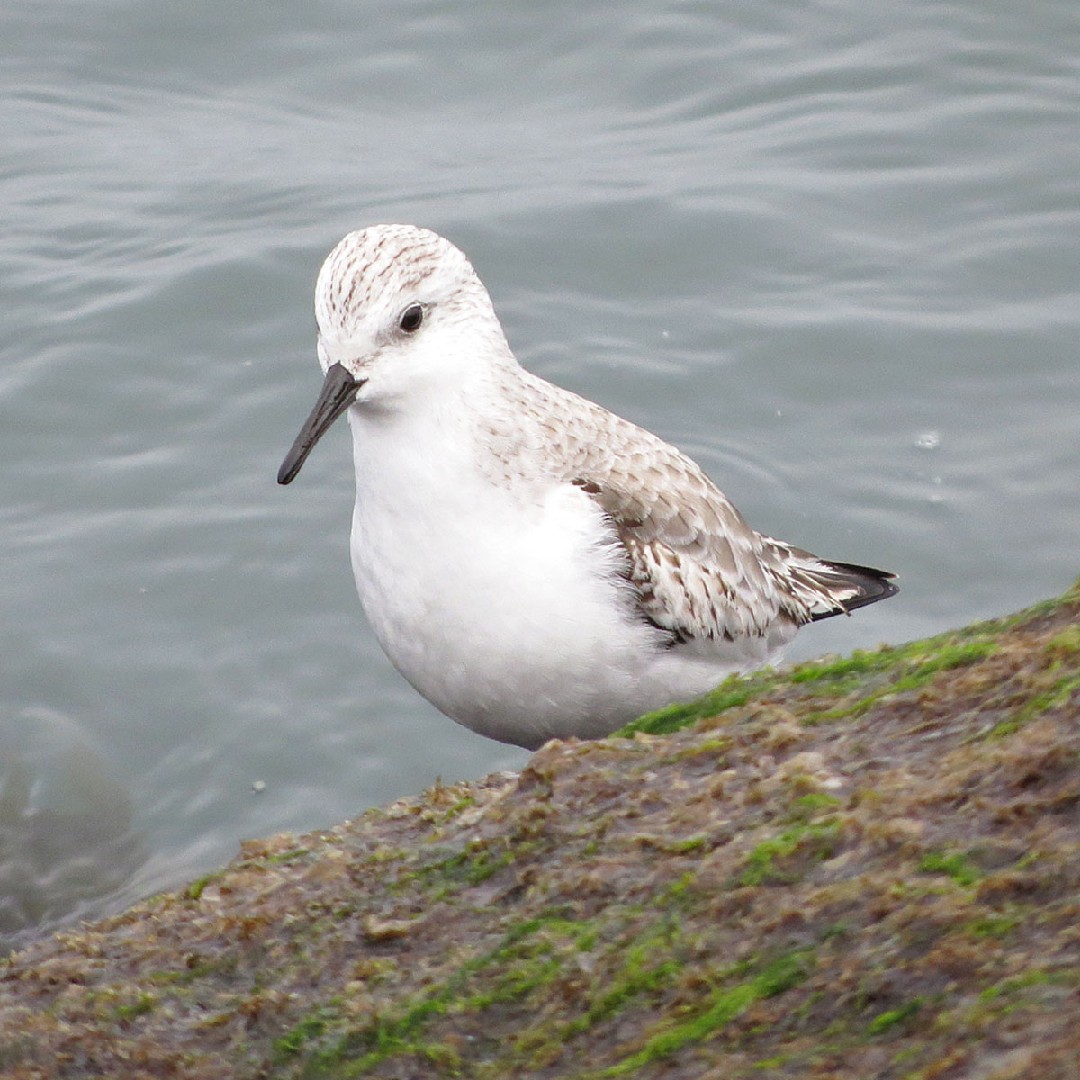Sanderling
A species of Calidris Scientific name : Calidris alba Genus : Calidris
Sanderling, A species of Calidris
Botanical name: Calidris alba
Genus: Calidris
 Photo By Don Faulkner , used under CC-BY-SA-2.0 /Cropped and compressed from original
Photo By Don Faulkner , used under CC-BY-SA-2.0 /Cropped and compressed from original Description
A small, fast-moving, wading bird, the sanderling can be spotted scuttling repeatedly down the shore, picking up food exposed by the retreating waves. Probably the most famous shorebird in the world, it's a long-distance migrant that travels halfway around the globe to its wintering site. It breeds in coastal tundra of High Arctic areas. Due to the pollution of the sea and shore, many populations have declined.
Size
18 - 20 cm
Colors
Brown
Black
White
Life Expectancy
10 years
Nest Placement
Ground
Clutch Size
3 - 4 eggs
Incubation Period
1 brood
Number of Broods
23 - 27 days
Feeding Habits
Sanderling's diet primarily consists of invertebrates like small crabs, various amphipods, polychaete worms, mollusks, and insect larvae. Sanderling forages by running along receding waves, probing wet sand for prey, and catching insects in flight. They feed on crustaceans such as isopods and mole crabs that emerge to feed during high tide, using their bills to extract prey from the sand. Plant material is also consumed if animal prey is scarce.
Habitat
During their breeding season, sanderling live in the high Arctic's coastal tundra, preferring stony, dry areas near wetlands at elevations of 60-800 m. Their habitat includes arctic flora, such as willows and sedges. Outside breeding, sanderling occupy global coastal sandy beaches, often stopping at tidal mudflats and inland waters, while occasionally using mudflats and riverbanks.
Nest Behavior
The female sanderling, likely sole constructor of the nest, times nest-building with the breeding season. Sanderling lay a clutch of eggs, with both parents sharing incubation duties to ensure the eggs' survival and subsequent care for the hatched young.
Nest Characteristics
Sanderling typically selects a nest site near freshwater shores, favoring exposed ground locations with minimal vegetation. The nest, often in a natural depression, is cup-shaped and lined with local materials like willow leaves, lichens, and moss, measuring around 3 inches across and 2.5 inches deep.
Dite type
Aquatic invertebrate eater
People often ask
Migration Overview
The sanderling breeds in the High Arctic areas of North America, Europe and Asia. In North America, it breeds in the Canadian Arctic Archipelago, Nunavut, Greenland (and to a lesser extent Alaska). In Eurasia, it breeds in Spitsbergen and areas of northern Russia from the Taymyr Peninsula to the New Siberian Islands. In the northern winter, it has a nearly cosmopolitan distribution across the world's marine coasts. It is a complete migrant, travelling between 3,000 to 10,000 km (1,900 to 6,200 mi) from its breeding grounds to its wintering sites. Birds that travel further also arrive later and leave sooner. Most adults leave the breeding grounds in July and early August, whereas juvenile birds leave in late August and early September. The northward migration begins in March at the southern end of their winter distribution. The breeding habitat of the sanderling is coastal tundra north of 5 °C (41 °F) July isotherm. The species typically chooses nesting sites on dry stony areas near wet areas, from 60 m (200 ft) above sea level to 800 m (2,600 ft). During the winter and its migration, it is most commonly found on coastal sandy beaches, but also occurs on tidal sand flats, mud flats and the shores of lakes and rivers. More infrequently, it may occur on rocky shores. 
General Info
Feeding Habits
Bird food type
Sounds
Call
Recording location: Namibia
Call
Recording location: Netherlands
Behavior
Sanderling exhibit energetic behavior, frequently moving along shorelines to keep pace with the waves while foraging. In their breeding territories, they are quite territorial and monogamous, although breeding arrangements can vary. These birds are notable for their courtship flights, involving elaborate aerial displays by the males. Pair-bonded sanderling are inseparable, and both partners share incubation duties. They employ distraction tactics against predators to protect their nests. Notably social outside of breeding season, sanderling often join mixed-species flocks and demonstrate cohesive anti-predator strategies by tightly clustering together when threatened.
Distribution Area
The sanderling breeds in the High Arctic areas of North America, Europe and Asia. In North America, it breeds in the Canadian Arctic Archipelago, Nunavut, Greenland (and to a lesser extent Alaska). In Eurasia, it breeds in Spitsbergen and areas of northern Russia from the Taymyr Peninsula to the New Siberian Islands. In the northern winter, it has a nearly cosmopolitan distribution across the world's marine coasts. 